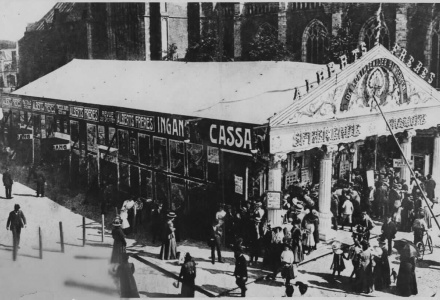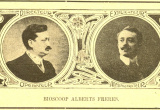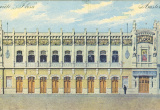Travelling Cinema
The first generation of film exhibitors was made up of two groups: variety theatre directors and travelling cinema showmen. The latter was made up primarily of fairground showmen who saw film as a popular attraction to help them draw in new audiences.
Around the turn of the 20th century, practically every fair had a movie pavilion. With their constantly changing audiences, travelling cinema owners could get by with a fixed set of films, occasionally adding one of the latest hits to their existing repertoire.
Besides fairs, other venues where films were shown included social clubs and community buildings. Some of the shows at these places were put on by individuals or groups with more ‘noble’ objectives than just turning a profit, such as the Salvation Army or Frederik Keijzer, who used his Christian cinema to preach as well as warn of the dangers of alcoholism.
It was expensive to pitch a movie tent at the fair during the heyday of travelling cinema (1905-1910). In August 1907, the Mullens brothers (Alberts Frères) paid more than 2,200 Dutch guilders to hire a stand for the whole two weeks of the Haarlem fair. Their investment paid off handsomely, however: they sold tickets to more than 30,000 visitors.
Important travelling cinema showmen:
Frederik Keijzer
Albert & Willy Mullens - Alberts Frères
Carmine Riozzi
more information
If you are looking for more material from our collection, please contact Film Sales:
sales@eyefilm.nl
phone +31 (0)20 5891 426


